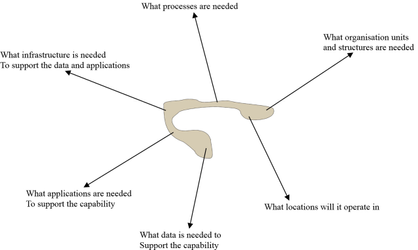Introduction
...
Alternatively one could choose to define capability from the architectural unification approach POLDAT
- Process (business processes)
- Organisation (structures)
- Location (Geographical information)
- Data (models, life cycles, security etc)
- Application (software, security, interoperability etc)
- Technology (infrastructure)
...
Your defined capabilities are there to deliver a long term strategy. In the interim, pressure points force you to respond to them through short term goals. These short term goals require certain adjustments to your long term defined capabilities, the capability increments (up or down) result in work being down in your organisation to handle the pressure point. The aim is to not change the long term strategy (capabilities) but adjust them to deliver the short and long term goals.
Defining
...
your capabilities
Defining a capability is an extensive task but once done can lead to a major simplification in the overall understanding and modelling of a enterprise.
Start by asking by looking for industry capability models for your sector. Develop an understanding of the goals of each capability and which goals are delivered by combined capabilities.
If there are no industry capability models, begin by clearly stating your goals. Now logically map out a set of capabilities that deliver those goals.
Once your capabilities are defined, begin to ask the following questions
Consider the following example, you you want to build a home from scratch, core required capabilities
...
